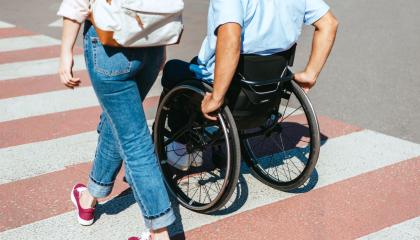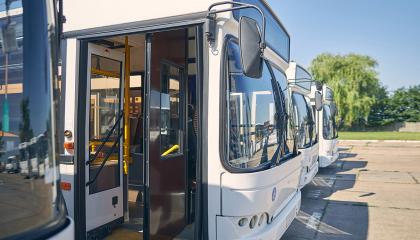When it comes to transportation, people prioritize convenience. Whether taking a two-hour flight instead of a ten-hour drive or utilizing public buses rather than walking, convenience drives pedestrians’ and commuters’ decisions.
In New York City, amidst its bustling streets and sprawling transit network, a less spoken narrative exists. While the city brings in dreamers, creatives, and those with amazing ambitions, it also chases away a vital community that makes up its boroughs—people with visual and physical disabilities.
The numbers tell a sobering story:
As urbanization continues to shape the world in 2023, creating accessible public spaces is more critical than ever. According to last year’s 2022 Valuable Truth Report, the disabled community represents $8 trillion per year in disposable income.
Accessible transportation is crucial in ensuring equal opportunities, independence for individuals with disabilities, and a way for people to get from point A to point B. Therefore, transportation systems must be designed and operated to accommodate all passengers' diverse needs. In this article, we will explore the best practices for ensuring accessibility in transportation so that everyone can navigate and enjoy the benefits of a well-connected society.
First and foremost, detectable warning tiles and surfaces were designed to assist individuals with disabilities to safely navigate public spaces, and then, in 1991, the Americans with Disabilities Act (ADA) mandated the use of detectable warning tiles in public areas throughout the United States.
The development of larger cities grew exponentially in the past fifty years, leaving us with rapidly built cities that have given too little thought to the disabled members of their population. Now is the time to reassess how to be more inclusive in the built environment so that people of all abilities and diversity experience a living environment that meets their needs.
To serve the community of individuals with disabilities, many state and local governments and some private companies have established paratransit transportation options. Paratransit transportation is meant to supplement public fixed-route bus and rail systems for individuals with severe impairments. From a taxi-like service to a semi-defined route, paratransit services often have varying levels of flexibility.
Connect with us
We pride ourselves on our customer service, and we'd love to hear from you! Sign up for our newsletter to keep up with industry updates and trends, as well as any new product releases.









